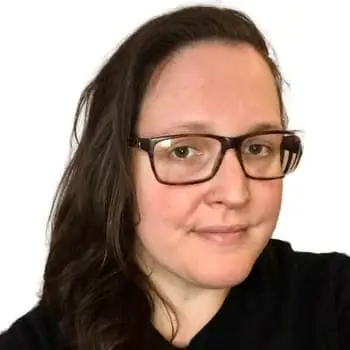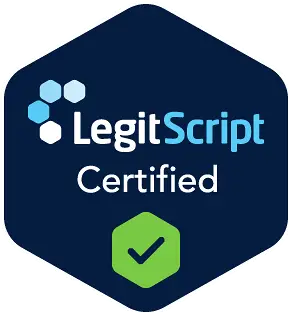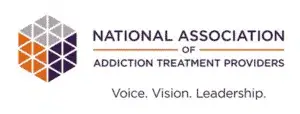There is almost no ailment that exists that does not have a prescription drug to help treat it. Prescription drugs can be a beneficial part of a comprehensive treatment program for many physical and mental health conditions.
For most patients, the use of prescription drugs is helpful, not harmful. However, if those medications are taken outside a doctor’s orders, or if someone misuses those drugs recreationally without a prescription, addiction can develop, and a slew of legal, social, financial and health problems may result.
The more you understand about how prescription drugs work and the potential risks that come with abusing them, the better you can identify a substance use disorder in yourself or a loved one and get the necessary treatment.
Most Commonly Abused Prescription Drugs
According to the National Institute on Drug Abuse (NIDA), some of the most commonly abused prescription drugs include prescription painkillers, prescription sedatives and prescription stimulants.
This Season, Give Yourself the Gift of a Fresh Start.
Whether you are struggling with addiction, mental health or both, our expert team is here to guide you every step of the way. Don’t wait— reach out today to take the first step toward taking control of your life.
Prescription Opioids
Opioid painkillers are drugs prescribed to treat moderate to severe pain. They are abused because of the euphoric high they can create. Someone who misuses opioids may do so by taking too much, crushing the pills before swallowing, snorting or injecting them, or taking opioids with alcohol or other mind-altering substances. The most commonly abused opioids include:
- Codeine
- Oxycodone
- Hydrocodone
- Morphine
- Methadone
Painkillers may cause several short-term health problems, including nausea, respiratory depression, confusion, miscarriage, overdose and more. Opioid withdrawal symptoms can include bone and muscle pain, sweating, vomiting, diarrhea, agitation, and many other symptoms.
Medications including Suboxone and Subutex are available to treat prescription opioid addiction, but medication alone is not enough. Behavioral therapies are recommended as well as long-term treatment, aftercare and support.
Prescription Sedatives
Prescribed to treat anxiety and sleep disruption, sedatives slow the brain’s activity and can be highly addictive. Types of prescription sedatives include barbiturates, benzodiazepines and sleep aids.
Most Commonly Abused Barbiturates
- Pentobarbital
- Phenobarbital
Most Commonly Abused Benzodiazepines
Most Commonly Abused Sleep Aids
- Ambien
- Lunesta
- Sonata
Short-term health issues caused by abuse of sedatives include confusion, low blood pressure, drowsiness, decreased reflexes and slowed breathing. Withdrawal symptoms include rebound anxiety, tremors, agitation and seizures.
While no specific medication is available for sedative withdrawal, symptoms may be managed by slowly tapering off the medication. Medical care is recommended in case of complications, and behavioral therapies can help the patient remain drug-free for the long term.
Prescription Stimulants
Prescription stimulant drugs are commonly prescribed to treat symptoms related to attention deficit and hyperactivity disorder (ADHD). Increased heart rate, breathing rate, and blood pressure are common effects of use. Examples of prescription stimulants include:
- Adderall
- Benzedrine
- Concerta
- Ritalin
To misuse these medications, users may swallow them as is, or crush and snort or inject them after being dissolved in water. High doses of stimulants can result in seizures, heart attacks, overdose, and other medical emergencies. Long-term abuse of the drugs can lead to cardiac problems, paranoia, anger management issues, and/or psychosis.
Prescription stimulant withdrawal symptoms may include insomnia, intense fatigue, depression, and/or suicidal thoughts or actions. Long-term behavioral therapies and relapse prevention are recommended treatment options for those ready to overcome a stimulant use disorder.
Prescription Drug Addiction Statistics
Though it may seem that prescription drug use is inherently safe, a doctor should only prescribe these drugs after careful consideration of past medical history, symptoms, other medications and other issues. Taking these drugs outside of a doctor’s care or taking more than prescribed can lead to serious medical consequences, including death.
Consider the following data on prescription drug abuse:
- About 52 million people older than 12 report having misused prescription medications at some point in their life.
- Approximately 12% of individuals who misuse their prescriptions become addicted.
- In 2019, more than 14,000 people died as a result of a prescription opioid overdose.
- The 2020 National Survey on Drug Use and Health reports an estimated 9.3 million people misused prescription painkillers, 6.2 million people misused prescription sedatives, and 5.1 million people misused stimulants in the previous 12 months.
- According to the CDC, emergency room visits related to opioid overdoses increased by 29.7% between July 2016 and September 2017.
Symptoms of Prescription Drug Abuse
Someone who is misusing prescription medications may exhibit a variety of signs and symptoms. While some symptoms depend on the specific drug, you may start to notice changes in their behavior, sleep patterns, eating habits or outward physical appearance.
Other signs a friend or loved one is misusing a prescription drug include:
- Difficulties in fulfilling responsibilities at work, school or home
- Bloodshot eyes or changes in pupil size
- Mood swings
- Loss of interest in hobbies or activities they once enjoyed
- Suspicious behavior and dishonesty about their drug use
- Legal troubles
- Increased risk-taking when using the drug
Dangers of Prescription Drug Abuse
While the short-term risks of prescription drug abuse are serious, the long-term risks of continued prescription drug abuse are just as dangerous. Some risks include:
- Physical dependence: While building a tolerance to a prescription drug is normal and can happen to anyone, physical dependence occurs when the body cannot function normally without the drug’s presence, making it even more difficult to stop using the medication. In someone whose body is dependent on a substance, quitting can trigger withdrawal symptoms that are uncomfortable or even life-threatening in some cases.
- Psychological dependence: A psychological addiction associated with a medication is usually defined by cravings for the drug. Obsessing over how many pills are left, how to get more or how to get high can all characterize a psychological dependence upon a prescription drug.
- Prescription drug addiction: Physical and psychological dependence together create an addiction, and treatment is necessary once addiction is diagnosed. Otherwise, the negative impact of drug abuse harms every aspect of a person’s life: social connections, job prospects, legal standing, health, and more. Without treatment, few are able to stop using prescription drugs safely.
- Accidents: When under the influence of any mind-altering drug, the risk of accidents increases significantly. Car accidents, drowning, burns, falls and more are a higher risk when someone is taking certain prescription drugs.
- Decreased cognitive functioning: Studies show that long-term use of prescription drugs causes long-term changes to the brain. The size and structure of neurons may change, which in turn can impact a person’s ability to function physically and emotionally without substances. While some damage may heal with time, not all problems caused by ongoing prescription drug abuse can be reversed.
- Legal difficulties: People put their freedom at risk when abusing their own or someone else’s prescription drugs. Heavy fines, jail time, and parole or probation appointments and check-ins are all common among people who live with an addiction long-term.
- Prescription drug overdose: Though several medical emergencies are potential problems for people who abuse prescription drugs, overdose is perhaps the most feared, and rightfully so. An overdose from opioid painkillers or sedatives may cause the heart and breathing to stop – and never start again. Stimulant prescription drug overdose may trigger fatal intractable seizures or cardiac arrest.
Prescription Drug Addiction Treatment in Colorado
Prescription drug addiction can happen even to those with a legitimate prescription. No matter how a substance use disorder begins, there are therapies and treatments that can help anyone stop using prescription drugs safely and start thriving in recovery. Most patients utilize a combination of treatments based on their past history of drug use and treatment attempts, as well as their goals for treatment and recovery.
Prescription drug addiction treatments include:
- Medical detox: Whether the patient is given maintenance medications such as buprenorphine or methadone, or takes non-addictive medications to help them manage withdrawal symptoms, medical detox is an important first step in recovery. Psychological withdrawal symptoms will also need to be addressed, and some patients benefit from taking antidepressants and/or anti-anxiety drugs for this purpose.
- Behavioral therapies: When a patient learns how to change perspectives and behaviors that are harming them, it can significantly impact their experience in recovery and make relapse prevention easier. Usually, a one-on-one experience with a therapist who specializes in substance use treatment and behavioral therapy is an essential component of comprehensive care.
- Support groups: A range of group therapy sessions, including 12-step treatment, can help patients become stronger in their communication skills, share their experience, and benefit from the experience and support of others. Connecting with other people who have been through similar struggles and who are facing the same road ahead in recovery can be empowering, in addition to topics covered and skills learned from the therapist.
- Alternative treatments: Non-talk therapies can benefit patients who need alternative avenues of understanding their experience in addiction, their co-occurring mental health issues and family circumstances, as well as any other issues that may be difficult to discuss, including trauma.
At The Recovery Village at Palmer Lake, our expert team of addiction professionals is committed to your recovery and long-term success. If you or a loved one is suffering from a prescription drug use disorder, contact us today to learn more about how we can help you and how to get started on your recovery journey. When you call, your privacy is our top priority.








